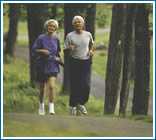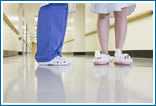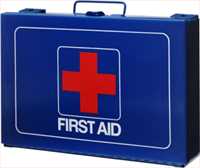Error processing SSI file
Story Ideas - 2009
- January
- February
- March
- April
- May
- June
- July
- August
- September
- http://www.cdc.gov/media/storyideas/2009.html
- http://www.cdc.gov/media/storyideas/2009.html
- http://www.cdc.gov/media/storyideas/2009.html
Jan
Happy New Year! Here are the story ideas for January, along with the 2008 year-end bonus story ideas that look back at the health issues of 2008 and what is to come in 2009.

Sticking to Your New Year's Resolution
Now that the celebrations are over and the decorations have come down, it′s time to focus on plans for the New Year and the resolutions you′ve made. Whether it′s eating healthier, trying to lose weight, or quitting smoking, the CDC has tips and helpful information to help you help your readers accomplish their goals.

Health System Transformation
There is a lot of ongoing dialogue about the challenges that lie ahead for President Elect Barack Obama as he tackles one of his top priorities - reforming our healthcare system. The United States spends about $2.1 trillion, about $6,700 per person, on health each year. Right now, 75 percent of our current health expenditures target treatment for preventable conditions caused by tobacco use, poor diet and inactivity, alcohol and drug use, motor vehicle crashes, firearms, and other risks. As the Nation′s health protection agency, the CDC knows full well that “a dime of prevention is worth a dollar of cure.” CDC is in full support of a rapidly expanding movement that includes state and local health agencies, cities, states, small and large businesses, and private citizens that are committed to helping America become a “Healthiest Nation.”

Protecting U.S. Borders
While the Department of Homeland Security works to protect U.S. borders from terrorists, the folks in the Division of Global Migration and Quarantine at CDC work to protect our borders from another, more discrete threat: infectious diseases. Quarantine, separating and restricting the movement of well people who may have been exposed to communicable diseases such as cholera, plague, smallpox or viral hemorrhagic fevers, has been around since the 14th century when cities experienced plague epidemics. Federal quarantine has only been used once in the last century, during the Spanish Flu of 1918-19.
- The History of Quarantine
- Quarantine stations, including a map of U.S. Quarantine stations
- Animal Importation
- Immigrant, Refugee and Migrant Health

The Importance of Being Vaccinated
Don′t be deceived by imposters who tell you and your readers that it′s too late to get a flu shot, because it′s not. Influenza activity usually peaks in February, so there is still time and enough vaccine available to be protected and help keep others protected. Since the flu vaccine takes about two weeks to provide protection from the flu, now is an optimal time to get vaccinated.
- Get the latest flu activity with the Weekly FluView
- Interim Antiviral Guidance for 2008-09
- Information for Specific Groups
Feb
Since 1963 Congress has required the president to proclaim February "American Heart Month." As the No. 1 killer of Americans, cardiovascular diseases, which includes stroke, are a serious public health threat. Below are some ideas to help you help your readers understand how these diseases affect them and how to prevent them.

The Heart of the Matter
It′s no secret heart disease is the primary killer of men and women in the United States. But did you know that almost half of men who have a heart attack under age 65 die within 8 years? Heart disease is the leading cause for all races except Asian Americans, though it affects races, ethnicities, and genders differently. Getting the basic facts and figures correct will help your readers understand the staggering affects heart disease has on the American population.
- Facts on Heart Disease in Men
- Facts on Heart Disease in Women
- Heart Disease Signs and Symptoms
- Heart Disease Risk Factors
- Heart disease death rates, 2000-4, Adults aged 35 and older by county
- Behavioral Risk Factor Surveillance System (self-reported risk factors for heart disease)
- Common Killers Podcast: A Cup of Health with CDC

Stroke
The risk of having a stroke more than doubles each decade after the age of 55 and more than 160,000 people die each year from it in the United States. As with most health conditions, stroke death rates are higher for African Americans than for whites, even at younger ages. And it has been noted for several decades that the southeastern United States has the highest stroke mortality rates in the country. It is not completely clear what factors might contribute to the higher incidence of and mortality from stroke in this region.

All Things Considered, I'm Fine
When you say heart disease, what do your readers think of? The heart attack their neighbor had last month? What else comes to their mind? While coronary heart disease, which can lead to a heart attack, is the most common form of heart disease, there are multiple other life-threatening diseases that affect the heart. Such as angina, chest pain or discomfort that occurs when the heart muscle is not getting enough blood, which is the most common symptom of coronary heart disease. Arrhythmias, such as atrial fibrillation, the quivering of the top right chamber of the heart, affect an estimated 2.2 million adults in the United States. Besides educating your readers, let them know that a heart attack isn′t the only that could happen to them.

And the Beat Goes On
Heart disease and stroke are the first and third leading causes of death among Americans. In 2008 cardiovascular disease cost $448.5 billion in health care services, medication and lost productivity. But what causes heart disease and stroke? Do your readers know what they can do to prevent these diseases? The following factors put people at an increased risk for heart disease and stroke. The links describe the factor and ways to keep then in check to decrease the risk of cardiovascular diseases.
Mar

You Make Me Feel Like a Natural Woman
There are more than 150 million women in the United States. They work in all professions, play every sport and everything from the air they breath to the medicine they use affects them. As mothers, teachers, businesswomen, nurses and more, women impact every aspect of our lives. Help celebrate Women′s History Month by making sure the women in your community are achieving longer, healthier, and safer lives.

The Cost of Healthy Living
The bottom line is on the top of everyone′s mind these days. But can pinching pennies and eating healthy equal a better you? Your readers are looking for ways to eat healthy, keep up with the proper nutrition guidelines and still have some money left over. Adding fruits and vegetables to their diet can reduce the risk of chronic diseases, including stroke and perhaps other cardiovascular diseases, and certain cancers.

Staying Safe in the Safest Place
Comfy beds, edible food and perhaps even bunny slippers might make hospitals more appealing, but what about safe? Increasingly, hospitals have become the setting for serious health threats, ranging from staph infections like MRSA to urinary track infections to pneumonia. In American hospitals alone, healthcare-associated infections account for an estimated 1.7 million infections and 99,000 associated deaths each year. You might not be able to do anything about the lunch servings, but you can educate your readers on the threats to their safety in hospitals.

Healthy Aging
Life flies by. Somewhere between elementary school and high school graduation, the beginning of college and that first promotion, the first date and your tenth anniversary, it hits you. Billions of dollars are spent each year, directly and indirectly, to treat preventable diseases like diabetes, obesity and complications from smoking. With life expectancy at a record high, make sure your readers and their families get the necessary information to see that college graduation, move to the corner office and celebrate a 25th anniversary.
- Take five for health: things to do in five minutes or less to stay healthy at any age
- Caregiving tips for families with special needs
- Safe and healthy kids and teens
- College health and safety

Don't Lose Sleep Over It
Sleep, like the economy, is one topic on which everyone has an opinion. In these tough economic times, it′s no surprise that some people are losing sleep and having trouble staying awake during the day. But when does simply not getting enough sleep turn into serious health problems? Help your readers stay on top of their game with some information on healthy sleeping and recognizing the signs of sleep disorders.

Way Down to Kokomo
The sun is peaking through the clouds and winter weather is being replaced by chirping birds and yellow daffodils. This might not be the picture where you are, but students across the United States are ready for it and ready to swap out their books and parkas for surfboards and swimsuits. Help make sure they know how to have a good time and be safe.

Autism
One month a child is playing with his friends, interacting with ease. The next month his social skills seem impaired and his behavior has changed. Developmental disabilities, especially autism, are serious childhood disorders that affect a person throughout their life. Autism, one of a group of disorders known as autism spectrum disorders (ASDs), begins before the age of 3 and can manifest itself in any number of possible warning signs. Educate your readers, some of whom are parents and teachers, about autism, the misconceptions surrounding the disease and what to do if they think their child has a developmental disability.

Hi Ho, Hi Ho, It's Off to Work We Go
The seven dwarves might have enjoyed their job at the mines, but they′re fictional characters and your readers are real, as well as their job problems. Hours may be longer than normal to make up for a shrinking workforce, expectations higher and the rewards not foreseeable in the near future. So now is the time to make sure that your readers are not burned out, exhausted or on the way to serious health issue because of the stress of their job. Use these links to get some ideas on how to make sure America′s workforce is relaxed and ready to go.
Apr
Addressing the Effects of Climate Change
Flowers have started popping up, the days are getting longer and spring is in the air. April 22nd is Earth Day and April story ideas center on the environmental health effects of a changing climate and positive ways you can encourage your readers to change the world around them. Although scientific understanding of climate change is still evolving, there is a pressing need to prepare for any potential health effects. CDC has identified 11 ways to lead the public health response to climate change and works everyday to accomplish these goals.

Floods, Heat Waves and Wildfires, Oh My!
As climates change, weather events like floods, hurricanes, droughts and heat waves could increase in their frequency and severity. According to the Red Cross, more than 250 million people are affected by such disasters each year [882.8 KB]. Families are displaced when their home is engulfed by a rising river, children lose a grandparent after a heat wave sweeps through the city and a town looses a recreational spot following a wildfire that flies through a forest preserve. Injuries and drowning incidences increase when more rivers flood, ecosystems are disrupted when hurricanes constantly ravage the southeast coast and farmers feel a tightening around their wallets when drought causes a less-than-optimal crop season. You can provide your readers with tips to help them minimize their impact on the environment and prepare for extreme weather events if they occur.

Something is in the Air
Daisies are poking through the ground, bees are buzzing and the pollen count is off the chart. As global temperatures rise and more carbon dioxide is pumped into the air, plant metabolism and pollen production increase. The results? More time using an inhaler and less time outside getting ready for swimsuit season. Your readers need to know that with changes in climate come changes in how they should manage their health. Longer warm seasons coupled with higher producing flowers, grasses, molds and weeds lead to more opportunities for asthma and Chronic Obstructive Pulmonary Disease sufferers to be sick. Help your readers fight back.

Exposed to Asbestos
Asbestos is a naturally occurring substance in the environment, just like oxygen, sulfur and gold. But unlike gold, which is lovely to wear, or the oxygen we need to breath, at certain concentrations and over a long period of time, asbestos can have severe health effects such as lung cancer, mesothelioma, and nonmalignant lung and pleural disorders, including asbestosis, pleural plaques, pleural thickening, and pleural effusions. Asbestos exposure can occur in homes, at the workplace or in our community. Help your readers find out what they can do to prevent exposure and get help if they think they have been exposed.

Buzzier Seasons Ahead
Does it feel like summer arrives a litte earlier and stays a little later each year? Is that anything to really complain about? If you don′t fancy mosquito bites that can lead to West Nile Virus or diarrhea due to Cryptosporidiosis, it might be. Despite the difficulties of predicting the incidence of insect or animal-borne diseases, scientists know that climate is one of the many variables known to affect the rates of these diseases. The potential for climate change to impact the range and incidence is unknown, but some of these diseases, such as Lyme disease and Hantavirus, show evidence of seasonality and the range of these diseases could change with a changing climate. Make sure your readers know all the information about enjoying the outdoors safely.

Step by Step
When was the last time you could walk to work from home? Or take your children for a walk without having to pack and unpack twice? Walkable communities, communities where work, shops, schools, libraries, and churches are all within walking distance, might not be seen in your lifetime, but they are the wave of the future. CDC supports the Leadership in Energy and Environmental Design for Neighborhood Development (LEED-ND) rating system, a collaboration among the U.S. Green Building Council, the Congress for the New Urbanism, and the Natural Resources Defense Council, which is the first national standard for neighborhood design that promotes walkable communities. Such communities promote physical activity, improve air quality, lower the risk of vehicular injuries, increase the social connection among a community and reduce negative, manmade contributions to climate change.
May

One-stop shop for health images
If you are a reporter, chances are you are constantly searching for images and photos that can add life to your story. Health reporters often rely on images to capture the attention of their viewers and convey important health messages. At CDC, we've created a site that houses a variety of health-related images. Whether you need a picture of a mosquito, an influenza virus, or a child getting vaccinated, you can find them at CDC's Public Health Image Library. You can type in keywords for a quick search or browse through the featured PHIL collections such as Influenza, Natural Disasters, Environmental Health, Bioterrorism, and EM Imagery. PHIL isn't just for reporters. Health care providers, teachers, students, public relations professionals, and other consumers may find images on this site helpful for their various needs.
Most of the images in the collection are in the public domain. If you look directly beneath the image you will see a fair use statement that tells you if the image is public domain or copyright protected. Permission is not required for public domain images, but we ask that you credit the institution and contributor when known. If the image is copyright protected, you will have to contact the content provider to obtain usage permission. Take a look around!
Jun
School is ending and summer is finally here. It's time to take a walk, go for a swim and enjoy some outdoor activities. Remind readers that being safe is the key to having fun.

Say "Ah"
Cooking out this summer? Who doesn't love a big juicy burger? Cooking to a safe internal temperature of 160°F will ensure that your burger is perfectly safe. However, it's important to be mindful of foodborne illness or "food poisoning" when preparing summertime meals because disease–causing bacteria are often more prevalent in warmer weather. Many different agents of disease or pathogens like E. coli and Salmonella can contaminate foods or beverages.
Each year millions of people become sick from foodborne disease in the United States. The great majority of these illnesses are mild and cause symptoms for only a day or two. But some foodborne illnesses are more serious – every year thousands of people are hospitalized and some actually die from complications associated with foodborne diseases. The most severe illnesses tend to occur in the very old, the very young, those who already have an illness that reduces their immune system function, and in healthy people exposed to a very high dose of disease – causing bacteria. Foodborne illnesses that cause vomiting and diarrhea can be treated by replacing lost fluids and electrolytes. If you experience a diarrheal illness and it's accompanied by high fever, blood in the stool, prolonged vomiting and signs of dehydration please consult a health care provider.
For further information about food safety and foodborne disease please look at the sites below:

It's Okay to go in the Water
School is out, summer is here and the pools are full. Swimming is the second most popular sports activity in the United States and people make approximately 339 million visits to recreational water venues each year. But despite its popularity, swimming can be dangerous. In the past two decades, there has been an increase in the number of recreational water illnesses (RWI), illnesses that are spread by swallowing, breathing, or having contact with contaminated water, associated with swimming pools, water pars, hot tubs, lakes, rivers and oceans. Two parasites - Cryptosporidium and Giardia – cause most outbreaks of diarrhea, the most common RWI, among swimmers in the United States. Cryptosporidium causes particular concern because it′s extremely infectious and is not very susceptible to chlorine, which kills many other germs. Jaws was fictional, but RWIs are not! Remind your readers there are ways they can be safe in the water.
Soak Up the Sun

Skin cancer is the most common form of cancer in the United States. One in five Americans will develop skin cancer in their lifetime. Exposure to the sun′s ultraviolet (UV) rays appears to be the most important environmental factor involved with developing skin cancer and tends to be greater during the summer months. The two most common types, called basal cell and squamous cell carcinomas, are highly curable. However, melanoma, the third most common skin cancer, is more dangerous, especially among young people. Between 65 percent to 90 percent of melanomas are caused by exposure to UV light in sunlight. Help your readers understand the power of the sun and how it can affect their summer plans.
- Basic information about skin cancer
- Risk factors for developing skin cancer (scroll down)
- What you can do to protect yourself from the sun
- Play it Safe in the Sun: A Guide for Parents
- Skin cancer prevention and education initiative fact sheet
 (4 page)
(4 page)
It′s Hot Out There

While working in the great outdoors is a way of life for millions of Americans, people tend to spend more time outside during the hot, hazy days of summer. Whether you′re working construction, planting crops in the fields or just mowing the lawn, working under the blazing sun can be deadly. Heat-related illnesses claim the lives of hundreds of people each year. People suffer heat-related illness when their bodies are unable to compensate and properly cool themselves. The body normally cools itself by sweating but under some conditions, sweating just is not enough. In such cases, a person′s body temperature rises rapidly. Very high body temperatures may damage the brain or other vital organs. Make sure your readers are prepared when they step out the door.
- Tips for preventing heat-related illness
- Beat the heat podcast
- Heat stress resources for
Snap, Crackle and Pop

Peony, crossette, chrysanthemum, rings, waterfall and shell of shells. These names might not sound like anything other than random words, but come July 4th you′ll ohh and ahh at them. They are names of popular fireworks – exciting to watch – but dangerous if you don′t know how to handle them. Typically, 60 percent of injuries from fireworks in the United States occur in the month surrounding the July 4th holiday. In 2005 an estimated 10,800 people were treated in emergency departments for fireworks-related injuries. Injuries from fireworks most often affect the hands, eyes, and the head, face, and ears. So, remind your readers that fireworks should be used only by trained professionals and keep an eye on the sky.
- Fireworks-related injuries fact sheet
- Fireworks safety month
- How to prevent fireworks-related injuries
It′s Time to Get Your Hands Dirty

Benjamin Franklin once said, “an ounce of prevention is worth a pound of cure.” The best way to ward against the flu is by getting the seasonal vaccine; using sunscreen can help prevent skin cancer; and properly washing your hands can help prevent various types of infections. Hand hygiene practices are key prevention tools in healthcare settings, in daycare facilities, in schools and public institutions, and for the safety of our food. Basic advice could help save many of your readers lives.
- Clean hands save lives
- CDC TV clip: Put Your Hands Together
- Living in a clean and health world podcast
- Hand hygiene in healthcare settings
Jul
Fourth of July celebrations and fireworks, camping with friends, family reunions and cookouts… these are just a few of the many things to do this July! So while you're enjoying an exciting summer vacation or having fun in the sun, we encourage you to be safe this summer, wherever you are, and take a look at our story ideas for tips on summer safety.

Fireworks Safety
Firecrackers and sparklers, lots of BBQ and grilled hamburgers and hot dogs are some of the ways we celebrate the holidays. Cautions about fireworks are always important, especially around 4th of July celebrations and cookouts when most fireworks injuries occur. Many communities have fireworks displays that are handled by professionals. Be safe. Avoid the common fireworks injuries; leave the fireworks to the professionals.

Family Reunion Food and Fun Tips
Family reunions are a time of enjoyment and laughter with all of your loved ones. It's also a great time to instill healthy living activities, ideas, and traditions that your family can continue for years to come. CDC suggests family reunion health and safety tips to live by this summer. A family reunion is also a good opportunity to talk about your family's medical history.

S'more Happy Campers!
We've all heard the phrase "not a happy camper," but with these tips from CDC, you can be a happy, healthy, and safe camper. Camping is a great way to get friends and family together and enjoy the great outdoors. Take a few minutes before your trip and review some camping and hiking tips to ensure a fun and healthy trip.
Aug

Care for the caregivers
Caregivers are people who provide assistance to someone who is, to some degree, incapacitated and needs help. Typically, recipients of care have a chronic illness or disabling condition, and need ongoing assistance with everyday tasks in order to function on a daily basis. As the number of older American rises, so does the number of needed caregivers. Caregiving exacts a tremendous toll on caregivers’ health and well-being, and accounts for significant costs to families and society as well.
Although challenging, caregiving is generally undertaken voluntarily and most people indicate that they found it personally fulfilling (Family Caregiver Alliance, 2006). Most caregivers can identify positive aspects of providing care, which can assist with coping and lower perceived burden. However, some caregivers may face stress, burden, depression, and negative health effects from their duties. Many caregivers do not adhere to recommendations to follow a healthy diet and exercise program and tend to avoid preventive care for themselves. If your readers or viewers have a family member who needs long–term care, share this RE-AIM framework, “Assuring Healthy Caregivers”, with them. You can also visit the links below to learn more about caregiving:
Related Links

Lesson 1: Safety First
55 million students will be returning to classrooms across the United States this fall. If this includes your children, there are things you can do to help them. From an early age, safety awareness is key. Whether it is by car, bus, bike, or walking, the minute a child leaves home, safety becomes a concern. Children need to use seatbelts, look both ways before crossing a street, wear helmets when appropriate, take steps to form respectful relationships, and know how to avoid and reduce conflicts. Safety is also important at school, both in the classroom and during activities such as sports. When parents and educators work together, safety becomes a lifesaving priority that benefits the entire community. In honor of August, National Immunization Awareness Month, CDC would like to remind parents to update their children's vaccinations before school starts. Doing so will protect your child and others from various illnesses.
Related links

Drive with Caution
Motor vehicles have made travel easier and promoted economic and social development in many countries. Because of the widely-known benefits of motor vehicles, it may be easy to forget they can be a danger to drivers and pedestrians alike. Globally, every year, about 1.3 million people are killed in motor vehicle crashes and 20-50 million more are seriously injured. By 2020, motor vehicle crashes are expected to become the third most serious threat to human health in the world, making safe driving one of the foremost priorities in public health.
In the U.S., motor vehicle crashes are the leading cause of death for teens, accounting for more than one in three deaths in this age group. In 2008, nine teens ages 16 to 19 died every day from motor vehicle injuries. Per mile driven, teen drivers ages 16 to 19 are four times more likely than older drivers to crash. Fortunately, teen motor vehicle crashes are preventable, and proven strategies can improve the safety of young drivers on the road.
Texting while driving, as well as distracted driving, is becoming a well known problem among drivers of all ages. In 2008, nearly 6,000 people of all ages died in crashes involving a distracted driver and more than 500,000 were injured. Because of these surprising numbers, the Department of Transportation recently launched the national campaign "Put it Down" to encourage the public to end distracted driving.
Related links

Prostate Cancer
Be Aware. Be Prepared.
Prostate cancer is the most commonly diagnosed cancer in the United States and the second leading cause of cancer death. African American men, men above the age of 50, and men who have someone in their family who has had prostate cancer are at a higher risk for having the disease. Some medical experts believe all men should be offered regular screening tests for prostate cancer. Other medical experts do not. While there is uncertainty about the benefit of screening, the need for more men to be aware of the risk is undeniable. In 2006, 203,415 men were diagnosed with prostate cancer, and 28,372 men died from it.
CDC provides a prostate cancer screening decision guide [369 KB] that can be helpful to someone who is weighing the decision of whether to get screened by a doctor or not. The symptoms of prostate cancer can go undetected due to the fact that some men do not show symptoms, but if present the symptoms to notice are:
- Difficulty in starting urination.
- Weak, or interrupted flow of urine.
- Frequent urination, especially at night.
- Difficulty in emptying the bladder completely.
- Pain or burning during urination.
- Blood in the urine or semen.
- Pain in the back, hips, or pelvis that doesn't go away.
- Painful ejaculation.
Related links
Sep

Ear infections – will antibiotics help?
All members of your family can be affected by ear infections and when you or your children are suffering, the answer might be antibiotics. But, when the ear infection is caused by a virus, taking antibiotics may do more harm than good. Your readers need to know that each time they take an antibiotic unnecessarily, bacteria that normally live in their bodies are encouraged to become antibiotic-resistant. This means that the next time they get sick they are more likely to become ill with an antibiotic-resistant infection.
There are three main types of ear infections, which have different causes and treatments: acute otitis media, otitis media with effusion, and otitis externa. Your healthcare provider can determine what kind of ear infection is present and if treatment is needed. Parents are warned that if your child is younger than three months old, it is important to call your doctor immediately. Signs that your child may have an ear infection are pulling at the ears, excessive crying, fluid draining from their ears and fever.
To prevent ear infections, avoid smoking or exposure to second hand smoke. Be sure to keep you and your child up to date with recommended immunizations and breastfeed your baby for 12 months or more if possible. Healthcare providers may decide to wait a couple of days before prescribing antibiotics since you or your child may get better without them. Rest, over-the-counter medicines and self-care methods may relieve the symptoms of ear infections without the misuse of antibiotics. But remember, many over-the-counter products are not recommended for young children.
Related links:

National Cholesterol Education Month
What has no symptoms to notice, and yet puts more than 35 million people at high risk for heart disease? The answer is cholesterol. Cholesterol is a waxy, fat-like substance found in your body and many foods. Your body needs cholesterol to function normally but too much cholesterol can build up in your arteries. After a while, these deposits narrow your arteries, putting you at risk for heart disease and stroke. High cholesterol usually doesn't have any symptoms. As a result, many people do not know that their cholesterol levels are too high. However, doctors can do a simple blood test to check your cholesterol. High cholesterol can be controlled through lifestyle changes or if it is not enough, through medications. Explain to your readers that it is important to check their cholesterol levels. High cholesterol is a major risk factor for heart disease, the leading cause of death in the United States.
This September, tell your readers how to celebrate National Cholesterol Education Month by lowering their cholesterol:
- Low-fat and high-fiber food (Eat more fresh fruits, fresh vegetables, and whole grains).
- For adults, get at least 2 hours and 30 minutes of moderate or 1 hour and 15 minutes of vigorous physical activity a week. For those aged 6- 17, get 1 hour or more of physical activity each day.
- Maintain a healthy weight.
- Don't smoke or quit if you do smoke.
Related links

Emergency Preparedness
Though we may not be able to know exactly when an emergency or natural disaster will take place, we can still be prepared. Early preparation is especially important for people with chronic health condition. In an emergency situation or natural disaster, access to health care providers can be limited. National Preparedness Month is aimed to encourage people to know what to do during an emergency or a disaster, such as a flood or fire. To make sure that you are as prepared as possible the CDC suggests some tools you may want to have in the event of an emergency.
Related links

Watch Your Step
Preventing Falls in Older Adults
Every year, one in three adults age 65 and older falls. Twenty to 30 percent of those who fall suffer moderate to severe injuries that can threaten their ability to live healthy, independent lives. Your readers should know what simple steps they can take to lower these risks. One of the very best ways to reduce the risk of falling is by exercising regularly in order to strengthen legs and help improve balance, but it's important to talk to a health care provider before starting an exercise routine. Second, readers should be sure to tell their health care provider all the medications they are taking, to be sure there are no drug side effects or interactions that could affect balance. Third, it's important to have annual eye examinations and to update prescriptions to improve vision as much as possible. Finally, other steps people can take around the house to reduce their chances of falling include removing trip hazards, adding brighter lights, putting non-stick mats on shower and bathtub floors, installing grab bars next to and inside the shower or tub, and adding railings on both sides of the stairs (indoor and outdoor).
Related links
Oct

Breast Cancer Awareness Month
Not counting some kinds of skin cancer, breast cancer is the most common cancer in women in the United States. It is the most common cause of death from cancer among Hispanic women, and the second most common cause of death from cancer among white, black, Asian/Pacific Islander, and American Indian/Alaska Native women.
A mammogram is an X-ray of the breast. Mammograms are the best way to find breast cancer early when it is easier to treat and before it is big enough to feel or cause symptoms. Having regular mammograms can lower the risk of dying from breast cancer. Women between the ages of 40 and 49 should talk to their doctor about when to start getting mammograms. Women who are 50 or older should get a screening mammogram every two years.
CDC's National Breast and Cervical Cancer Early Detection Program (NBCCEDP) offers free or low-cost mammograms to women who qualify.
Related links

National Lead Poisoning Prevention Week 2010
Today, lead poisoning is considered the most preventable environmental disease among young children, yet approximately 250,000 U.S. children aged 1-5 years have elevated blood-lead levels. Because lead poisoning often occurs with no obvious symptoms, it frequently goes unrecognized. A simple blood test can prevent permanent damage that will last a lifetime.
National Lead Poisoning Prevention Week is October 24-30, 2010. Educate readers by raising awareness about childhood lead poisoning, stressing the importance of testing the home and screening young children for lead, and urging people to take steps to reduce lead exposure.
Related links
- National Lead Poisoning Prevention Week
- Lead Poisoning Prevention Tips
- Find a State or Local Program
- Lead Recalls

School Nutrition
Children in the United States are becoming increasingly overweight and obese, and most do not meet recommendations for a healthy diet. The school environment is one of several settings that can influence children's food choices and eating habits. By ensuring that only nutritious food options are available, schools can model healthy eating behaviors and help improve dietetic intake. Tell your readers what they can do to engage in efforts to improve the school nutrition environment by supporting strong state and district school nutrition standards, reviewing the district's school wellness policy, examining the foods and beverages that are available to students and educating students about nutrition and offering healthy foods and beverages.
The following links provide more information about school nutrition and getting involved to help improve your child's school nutrition:

Achieve Freedom! How to Quit Smoking
Did you know the benefits to quitting smoking begin just 20 minutes after your last cigarette? One out of every five deaths in the United States is caused by tobacco use. On average, adults who smoke die 14 years earlier than nonsmokers. Help your readers understand that by quitting smoking, they lower their risk for cancer, heart disease, stroke and respiratory diseases. Click on the following links for advice on quitting smoking for your readers.
- Health Effects of Smoking
- "How to Quit" Resources
- State and Community Resources
Nov

Healthy Holidays
Family, fun…and FOOD! It's what the holidays are all about, right? But that doesn't mean you have to pack on the holiday pounds. Balance the calories you consume with the calories you burn, and avoid any holiday weight gain. Here are some ways to help you do just that:
Take the Extra Calories Out of Cooking!
- If you're heading out to a party—holiday, birthday or any sort—eat a light, healthy snack before you go. Broth-based soups, cereal with skim milk, or just plain fruit are all good options! This will help curb your hunger and decrease your visits to the buffet table.
- Modify recipes to reduce the amount of fat and calories. For example, when making lasagna, use part-skim ricotta cheese instead of whole-milk ricotta cheese. Substitute shredded vegetables, such as carrots, zucchini, and spinach for some of the ground meat in lasagna.
- Bring a low-fat, holiday dish to the party. Need some suggestions? Visit CDC's Healthy Recipes site for details.
- When eating or snacking in front of the TV, put the amount that you plan to eat into a bowl or container instead of eating straight from the package. It's easy to overeat when your attention is focused on something else.
- Choose water, diet, or low-calorie beverages instead of sugar-sweetened beverages.
- Limit your alcoholic beverage intake. Alcoholic drinks can have many calories, especially holiday favorites like eggnog. Cut or limit your alcohol calories by drinking more water.
Get Active, Healthy and Happy!
- Make a goal with a friend to meet the new Physical Activity Guidelines! Visit CDC's Physical Activity for Everyone site for details.
- Sign up for a 5K walk or run to keep your mind focused on physical activity goals. Maintain your physical activity during the holidays— better yet, try and get more active! It will make those New Year's resolutions even easier to attain.
- Find fun, creative ways your friends and family can spend time being active instead of eating. Be sure and spend time together that doesn't revolve around a meal.
Visit CDC's Healthy Weight for more information.

Protecting Internationally Adopted Children from Lead Poisoning
Prospective parents adopting a child from overseas need information to safeguard the health of the child from lead poisoning, which can cause several health problems, including brain damage. The risk for lead exposure is much higher in many countries from which children are adopted than in the United States. Each country sets its own policies or regulations for environmental exposures, including lead, and some countries have stronger regulations than others. CDC has information on this topic for adoptive parents and health care providers.
November is National Adoption Month. The U.S. Department of State's Office of Children's Issues shows that from October 1, 2008, to September 30, 2009, a total of 12,753 internationally adopted children immigrated to the United States. The largest numbers of these children were originally from Ethiopia, mainland China, South Korea, and Russia.
Foreign-born adopted children tend to have higher levels of lead in their blood than children born in the United States. Readers can learn more about how internationally adopted children may have been exposed to lead before they came to the United States, and what they can do take to get the child proper diagnostic screenings and follow-up care if needed.
Important points to emphasize
Internationally adopted children can be exposed to lead from a number of sources including, cooking utensils and cosmetics, leaded gasoline, exhaust, drinking water from metal pipes or storage containers, exhaust and air pollution from nearby mining and smelting plants and industrial emissions.
Most children with elevated blood-lead levels do not have any symptom. Simple blood tests are the only way to determine if a child has an elevated blood lead level.
Related Links
- International Adoption and Prevention of Lead Poisoning
- Lead Poisoning Prevention Tips
- CDC Web Feature: National Adoption Awareness Month
- International Adoption: Health Guidance and the Immigration Process

Staying Healthy with Diabetes
Diabetes is a disease in which blood glucose, or blood sugar, levels are above normal. It can cause serious health complications including heart disease, blindness, kidney failure, and amputations of feet and legs. Diabetes, the seventh leading cause of death in the United States, occurs when a person's body either doesn't make enough insulin or can't use its own insulin as well as it should. Type 2 diabetes, which is associated with obesity and physical inactivity, accounts for about 90 to 95 percent of all diagnosed cases of diabetes. Risk factors for type 2 diabetes include older age, obesity, family history of diabetes, history of gestational diabetes, impaired glucose tolerance, physical inactivity, and race/ethnicity. Regular physical activity and loss of a small amount of weight (5 to 7 percent of total body weight) can significantly reduce the risk of developing type 2 diabetes.
Explain to your readers that type 2 diabetes can have no obvious symptoms, and that many people with the disease do not know they have it. Anyone aged 45 years or older should consider getting tested for type 2 diabetes, especially if they are overweight. If they are younger than 45, but are overweight and have one or more additional risk factors, they should consider testing. People with diabetes can reduce their risk of complications by maintaining healthy blood glucose levels, body weight, blood pressure levels, cholesterol levels, exercising, getting the annual flu vaccination, and, if they smoke, quitting.
Related Links

Protect Yourself this Season: Get Vaccinated
Now is the time to get vaccinated against seasonal flu. Flu activity in the United States is low now, making this an excellent time to get a flu vaccine. Everyone 6 months and older should get vaccinated, even if they got a seasonal or 2009 H1N1 vaccine last season. The 2010-2011 flu vaccine has been updated to protect against the three flu viruses that CDC expects will cause the most illness in the United States this season. Help your readers find where they can get flu vaccine this season with this list of vaccine locations.
Another important vaccine to get is one against pertussis, or whooping cough. Pertussis is a highly contagious respiratory disease that affects people of all ages. It can be fatal, especially in babies less than 1 year of age. From January to October 26, 2010, more than 6,200 cases of pertussis (including ten infant deaths) were reported throughout California. This is the most cases reported by California in 60 years. Share with readers that the most effective way to prevent pertussis is through vaccination with DTaP for infants and children and with Tdap for pre-teens, teens and adults. Getting vaccinated is especially important for families with new infants.
Related Links

Youth Violence through New Technology
Today, young people are using new media technology and new communication avenues such as text messaging, chat rooms, and social networking websites to communicate with others in the U.S. and throughout the world. This technology has many intellectual and social benefits. However, electronic media can be used by youth to embarrass, harass or threaten their peers. An increasing number of teens and pre-teens are becoming victims of this form of "electronic aggression." It is important for parents to be aware of this trend and how it may affect their children. Tips for parents and caregivers include talking to children, developing rules, exploring the sites their child visits, talking with other parents, connecting with the school, and educating themselves on new technology their child is using.
Related Links
Dec

Tired? Give yourself some extra rest this holiday season
It's that time again, when people are hustling and bustling in anticipation of the holidays. It seems like there are endless errands to run and presents to wrap. But one thing to remind your readers about is the importance of a good night's sleep. Sufficient sleep is increasingly being recognized as an essential aspect of health promotion and chronic disease prevention in the public health community. Insufficient sleep is associated with chronic diseases such as diabetes, cardiovascular disease, obesity, and mental illnesses including depression. It can also result in drowsy driving which can lead to motor vehicle accidents. According to the National Sleep Foundation, adults need 7-9 hours of sleep a night, and children and teens need more. Approximately 29 percent of U.S. adults report sleeping less than 7 hours per night and an estimated 50-70 million has chronic sleep and wakefulness disorders. Ten percent of American adults report experiencing chronic insomnia. Explain to readers that sufficient sleep is not a luxury, but a necessity for good health.
Related links

Here comes Jack Frost!
It's getting colder outside and whether your readers love playing in the snow or prefer being bundled up by a fire, share with them some important safety tips about winter weather. Did you know cold weather puts an extra strain on the heart? If you have heart disease or high blood pressure, talk to a doctor about working in the cold. Cold temperatures can also be particularly dangerous for infants and the elderly. Staying indoors can help reduce the risk of car crashes and falls on ice, but there are also indoor hazards. Stay warm safely by keeping anything that can burn at least 3 feet away from heating equipment, such as the furnace, fireplace, wood stove, or portable heater. These actions can reduce the risk for a home fire. Following these prevention tips will prepare your readers for whatever winter weather comes their way!
Related links

On the Road Again… Holiday Road Safety
During the upcoming holiday season, and all year, remind readers to keep safety in mind whenever they are on the road. Wearing a seat belt can reduce the risk of dying in a crash by about half. Also, make sure young passengers are buckled into appropriate safety seats. The safest place for children of any age to ride is properly restrained in the back seat. Data show that child safety seats reduce the risk of death in car crashes by 71 percent for infants and 54 percent for toddlers ages one to four.
Share with readers some steps to make sure that they and everyone they celebrate with avoids driving under the influence of alcohol. 1. Plan ahead. Always designate a non-drinking driver before any holiday party or celebration begins. 2. Take the keys. Don't let friends drive if they are impaired. 3. Be a helpful host. If you're hosting a party this holiday season, remind your guests to plan ahead and designate their sober driver; offer alcohol-free beverages; and make sure all of your guests leave with a sober driver.
It's always important to talk with your teen about the dangers of driving—and keep the conversation going. Extend your teen's supervised driving period and help your teen develop the skills he or she needs by providing as many supervised practice driving hours as possible. Set the rules of the road. Practice driving will empower a teen, but rules will provide much needed limits to keep him or her safe. Enforce the rules with a Parent-Teen Driving Agreement. No matter what time of year it is, tips from CDC's Injury Center on motor vehicle safety can help you protect yourself, your passengers, and your family and friends.
Related links
Error processing SSI file
- Page last reviewed: January 13, 2014
- Page last updated: January 13, 2014
- Content source:
Error processing SSI file


 ShareCompartir
ShareCompartir